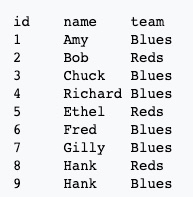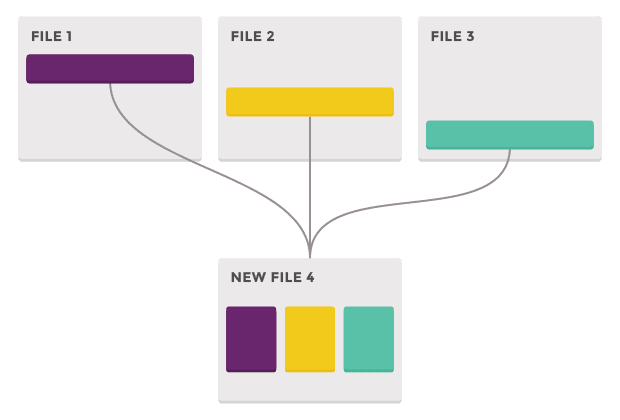Are you a marketer with dreams of expanding your email program? That’s great! Now before you go wading through the comically large competitive landscape, ask yourself this simple question: will your emails be powered by single or multi-source data?
Your answer will help you gauge the appropriate level of sophistication you’ll need from your next ESP. Once there, you’ll quickly narrow down your options.
Now for simplicity sake, we’re defining single source data as data pertaining to one specific marketing field. This could be something as straightforward as a running customer address list.
For example, you might own a store where you keep basic information about your customers’ contact details. You’ll use that single source of customer data for performing basic email promotional outreach.
Multi-source marketers, on the other hand, build atop that basic customer information with additional layers of detail. Perhaps you run a website and regularly email target customers with specific inventory content—that’s marketing with multi-source data.
Multi-source marketers can utilize the same entry-level platforms, but that doesn’t necessarily mean they should. Inside this post, we’ll detail exactly why.
Flat File, Flat Experience
A good portion of entry-level email platforms rely on flat file systems for data management. A flat file is a simple approach to data storage where information is recorded in a uniform format inside a single table structure.
This table structure organizes data records in rows, with each column containing a single piece of data in the record—think CSV file with customer contact information.
Flat file systems (FFS) are simply that—a no-frills way of documenting immense sets of tabular data structured as rows and columns. Each row represents a line of the parent file.


Flat file layout: simple, structured, self-explanatory.
Basic data writing and editing is straightforward in a FFS—but simplicity in this case does not infer efficiency, especially at scale. As the number of these files grow, organizing them into related groups gets tricky.
Going one step further, extracting and joining information from these different files in order to create another custom file is time-consuming and fundamentally inefficient.


Why settle for three static files when you could have four? /sarcasm
This is why FFS makes multi-source email marketing difficult—your most valuable customer data is locked away inside a variety of files dispersed across different silos.
The rigid storage and restricted data access of FFS cannot accommodate the dynamic demands of modern email marketing and result in generic and impersonal brand experiences.
Simple Personalization Isn’t Simple
Let’s say you want to create an email campaign incorporating standard multi-source data for a basic, personalized email. For this example, let’s pretend you’re a jewelry store wanting to send an email with updated inventory pricing for a coming sale. Though this may seem like a simple enough task, you’ll see why it’s anything but.
Here are the five painstaking go-to-market steps:
- Get the inventory data: First, you need to acquire inventory and pricing information. This is your core email content. Yet it likely lives inside a different system or resides with another team within your organization. Unfortunately, batching large files of data can take anywhere from hours to even days. You’re effectively stuck until you acquire it.
- Format that data: Next up is taking that recently acquired product data and formatting it for manipulation (by you or your data science team). The process of transforming the data is the sticking point here; standardizing hundreds or thousands of columnar records into a nested format for deeper analysis is time-consuming. Keep in mind, you’ll need to budget additional time to re-flatten that new data and append it to those hundreds or thousands of records once in-hand.
- Pull audience list data: Now that you have the select product data for your email promotion, you must identify the appropriate audience to receive it. Remember, this is a “personalized” email—you’re not blasting your entire database. Entry-level ESPs offer limited segmentation capabilities, so you’ll likely need to pull specific customer data from your e-commerce platform (or any other tool or team hosting that information) to generate the right audience lists that you can later import back into your ESP.
- Upload and apply data: You’ve got your target audiences and ideal content mapped out, and now it’s time to apply this information and build your emails. Finally, it’s time to take off the “Project Manager” hat and wear your rightful “Marketer” hat. Is it easy to create and house multiple email templates with your ESP? We hope so. Otherwise, you’ll be tailoring different templated messages to each of the audience segments you’ve selected.
- Send email: At long last, you’ve reached the end! It likely took a village to get there, but you’ve done it. You’ve built, scheduled and finally delivered a barely-personalized email to your subscribers.
Five steps may seem misleadingly “simple” on its face, but the devil is always in the details. Your marketing team (or developer teams) are manually building detailed lists for every campaign. Since FFS don’t support structures that index data or recognize relationships between records, you’re building by hand. The inherent limitations of FFS leave behind a pitfall-laden execution process that ends up burdening your entire organization.
Generate Revenue, Not Costs
A recent study found that 53% of brands report taking more than two weeks to create a single email! As we laid out in our process summary, that’s not just your time, either.
Consider the required steps taken in order to ship a single FFS email; it’s likely you’re billing back significant costs to your organization. This inefficient two-week process is consuming the time, energy and resources of your company. It’s taking everyone away from other revenue-generating opportunities.
And once the post-production dust has all but settled, what exactly do you have to show for your efforts? An aging email that might actually miss the mark with your customers!
There’s a lot riding on that email you’re getting ready to queue up. 94% of consumers report they’re already annoyed by the communications they regularly receive from brands—another irrelevant email might be the final straw that triggers the breakup.
Timing Is Everything
As soon as you export your first batch of customer data from your FFS, you’ve fallen behind your customers’ experiences. Remember, while you’re taking two weeks to build that single email, customers could be engaging and interacting with your competition.
In the study cited earlier, consumers identified irrelevant content as one of their biggest brand pet peeves, yet your FFS has left you reliant on old, static data doesn’t account for your customers’ most recent activities. The further your message content strays from your customer’s here-and-now, the less valuable it becomes.
In 2020, earned customer engagement matters more than ever. As Forrester puts it, “Today’s empowered consumers are more suspicious of brands and more willing to leave one brand for another.”
Considering 84% of consumers check their email on a daily basis, mastering this marketing channel is of the utmost importance. Don’t jeopardize your brand’s reputation because you’ve leaned too long on FFS-based tools that have technical architectures schemed in the 1980s.
Out With the Old, In With the New
Consistently providing exciting and meaningful content to all audiences is the marketer’s responsibility. If you’re struggling because of inferior technology, you aren’t alone.
A recent survey of executives conducted by Gartner reports that 60% of respondents indicate both “slow strategy execution” and “insufficient digital capabilities” are areas of top concern at their brands. Though the reach of FFS marketing tools is expansive, change looms within the market.
Stop settling for the status quo—your time is worth more than that. We invite you to sign up for a customized demo so you can see for yourself how far modern growth marketing platforms have come.
































